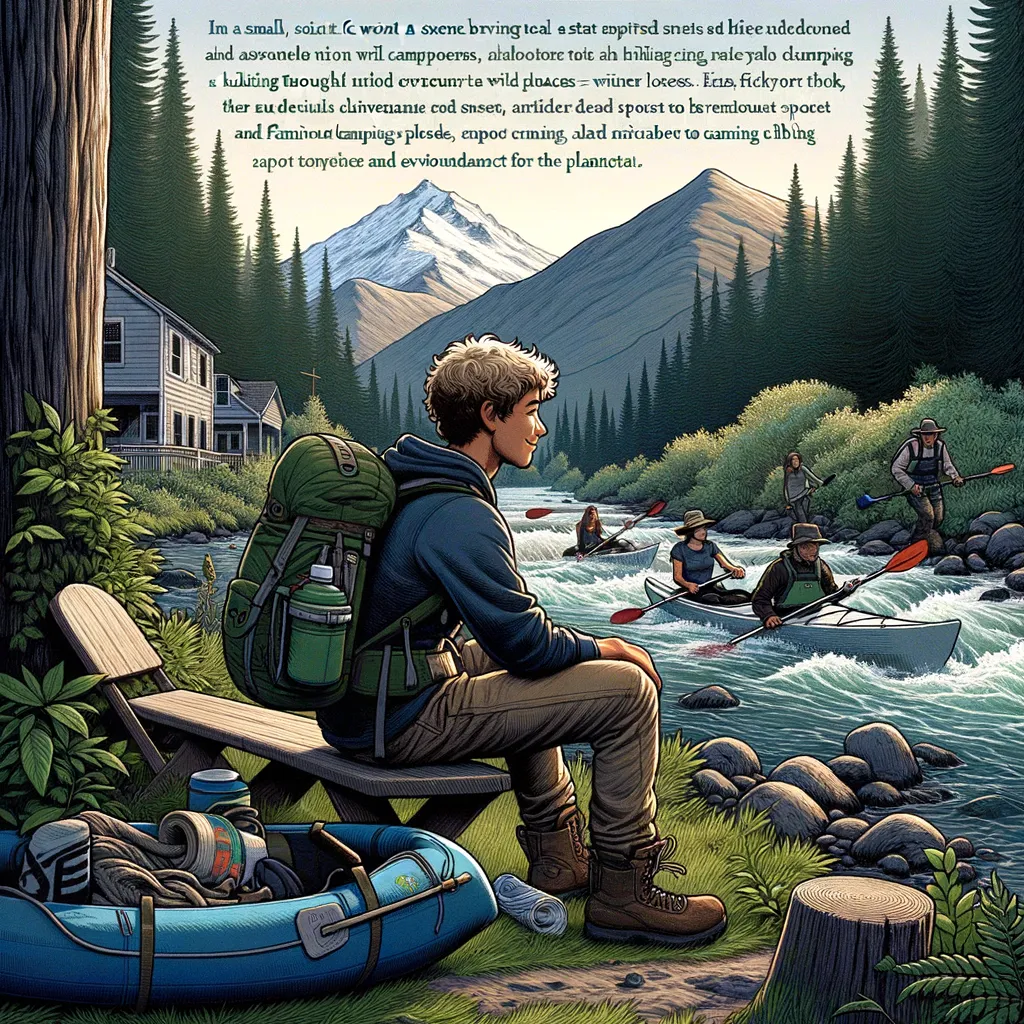Ultimate Guide to Safely Hiking in Bear Country for Families
Welcome to our ultimate guide on how to stay safe while hiking in bear country, specially crafted for the adventurous families out there! Venturing into the wilderness can be a thrilling experience, especially when you have the chance to connect with nature alongside your loved ones. However, when your outdoor adventures take you into areas populated by bears, it’s crucial to be well-prepared and knowledgeable about safety practices. This guide will walk you through essential tips and strategies to ensure your family’s hiking trips are safe, enjoyable, and memorable.
Understanding Bear Behaviour
Before heading into bear territory, it’s vital to understand bear behavior. Bears are generally reclusive creatures but can become dangerous if surprised, threatened, or when they’re protecting their young or a food source. Knowing the types of bears you might encounter (such as black bears or grizzly bears) and their behavior will help you prepare better and make informed decisions while on the trail.
Pre-Hike Preparations
Preparation is key to a safe hiking experience in bear country. Here are a few steps to take before you even hit the trail:
- Educate Your Family: Make sure everyone understands the importance of bear safety and how to behave if they encounter a bear. This includes speaking calmly and moving slowly.
- Check Bear Activity: Always check recent bear activity reports in the area you plan to hike. Many national parks and wilderness areas provide this information online or at park ranger stations.
- Carry Bear Spray: Bear spray can be an effective deterrent in the event of an encounter. Ensure you know how to use it and that it’s easily accessible, not buried in your backpack.
During the Hike
Once you’re on the trail, keeping bear safety in mind is essential. Here are some tips to follow during your hike:
- Stay Together: Always hike in groups, as bears are less likely to approach larger gatherings of people. Keeping children close and within sight is especially important.
- Make Noise: Bears usually avoid humans, so making noise — by talking, clapping, singing or using bear bells — can alert bears to your presence, giving them a chance to move away.
- Stay on Designated Trails: For your safety and the protection of wildlife, always hike on marked trails and obey all wilderness rules and trail signs.
Following these mindful practices will significantly enhance your safety while exploring the beautiful and majestic landscapes that bear country has to offer. Remember, your safety starts with preparation and informed decision-making, both before and during your hike.
This guide is just the beginning of ensuring a safe, enjoyable outdoor adventure in bear territory. Stay tuned for more in-depth insights and tips to keep your beloved family safe while exploring the great outdoors. Remember, the wilderness welcomes those who respect its inhabitants and its rules. So, strap on your hiking boots, pack your bear spray, and get ready for an unforgettable family adventure with peace of mind, knowing you’re well-prepared for whatever lies on the trail ahead.
Happy hiking, and stay tuned for our next section on How to Handle a Bear Encounter, to further ensure your family’s safety and confidence in bear country.

Ultimate Guide to Hiking Safely in Bear Country with Your Family
Exploring the wilderness can be a rewarding family adventure, especially when it leads you into bear country. While the presence of bears adds an element of unpredictability, proper preparation and knowledge can ensure your hikes are safe and enjoyable. This comprehensive guide dives into essential information and strategies parents should know to navigate bear territories confidently with their families.
What Parents Should Know About Hiking in Bear Country
Ensuring the safety of your family in bear country begins with understanding and preparation. Here are five critical things every parent should know:
- Bear Behavior and Identification: Educate your family about the differences between black bears and grizzly bears, including their behaviors and how these might influence your safety practices. For example, grizzly bears are more likely to defend territory or a food source, while black bears might be more easily intimidated by humans. Recognizing the type of bear from a distance can help you make the correct decisions quickly.
- Pre-Trip Planning: Check the area for recent bear sightings and activity, and choose your trails accordingly. Seasonal bear activities, such as mating in the spring or foraging in the fall, can affect their behavior. Preparing alternative routes in advance can enhance safety if your planned path is noted for recent bear activity.
- Essential Safety Gear: Bear spray is a must-have on any hike in bear country. It’s critical that the bear spray is easily accessible and not packed away. Additionally, consider carrying a noise device, like a whistle or bear bells, to help deter bears from approaching unnoticed.
- Food Storage and Handling: Bears have an incredibly keen sense of smell and can be attracted to your snacks or meals. Use bear-proof containers and dispose of all food waste properly. Never leave food unattended and teach children the importance of eating in designated areas away from your sleeping site.
- Reacting to a Bear Encounter: Despite precaution, you might still encounter a bear. It’s essential to know how to react—never run away or climb a tree, as this could trigger a chase response in bears. Instead, speak calmly, group together to seem larger, and slowly back away. If a bear approaches, use your bear spray following the manufacturer’s instructions.
Beyond these primary considerations, creating a culture of respect and caution around wildlife with your family is crucial. Discussing the importance of not surprising wildlife, keeping pets on a leash, and respecting nature’s boundaries instills safe habits that will serve your family well, whether you’re on a local trail or deep in bear country.
When hiking in bear country, the safety, preparation, and education you bring to the experience can make all the difference. By fostering an environment of respect for the wildlife and wilderness you’re exploring, you’re not just keeping your family safe; you’re also contributing to the protection and preservation of these majestic animals and their natural habitats.
With the right preparation, a family hike in bear country can be a safe and exhilarating adventure. It’s an opportunity to teach valuable lessons about nature, wildlife, and personal responsibility in the great outdoors. So, lace up your hiking boots, pack your gear with care, and embark on a journey that will create lasting memories for your family, all while ensuring the safety of everyone involved.
Exploring bear country with your family is not just about the precautions you take but also about the incredible experiences and memories you’ll create together. Armed with knowledge, preparation, and respect for nature, your adventures in the wilderness are sure to be unforgettable. And remember, a well-prepared hiker is a safe hiker. By following these guidelines, you’re paving the way for many safe and enjoyable family adventures in nature’s astounding bear habitats.
Arming yourself with knowledge and preparation enables your family to confidently and safely explore the endless beauty that bear country has to offer. Trekking through the wilderness should be an exhilarating experience shared with loved ones, and by adhering to these essential safety tips, you’re ensuring that every hike is not just an adventure, but a secure journey through the natural world.
Camp until your heart contents. Camp places
Disclaimer
The articles available via our website provide general information only and we strongly urge readers to exercise caution and conduct their own thorough research and fact-checking. The information presented should not be taken as absolute truth, and, to the maximum extent permitted by law, we will not be held liable for any inaccuracies or errors in the content. It is essential for individuals to independently verify and validate the information before making any decisions or taking any actions based on the articles.




